Star Party of Campo Catino, 2018
Astrophotography, Nebulae, Sky-Watcher Newton 200, Galaxies ·I must say that I’m really proud of the results I got at the Star Party of Campo Catino! Targets photographed: the Andromeda Galaxy, the Dumbbell Nebula, the Triangulum Galaxy, the Pinwheel Galaxy and the Pacman Nebula! Check them out in the post!
The Andromeda Galaxy
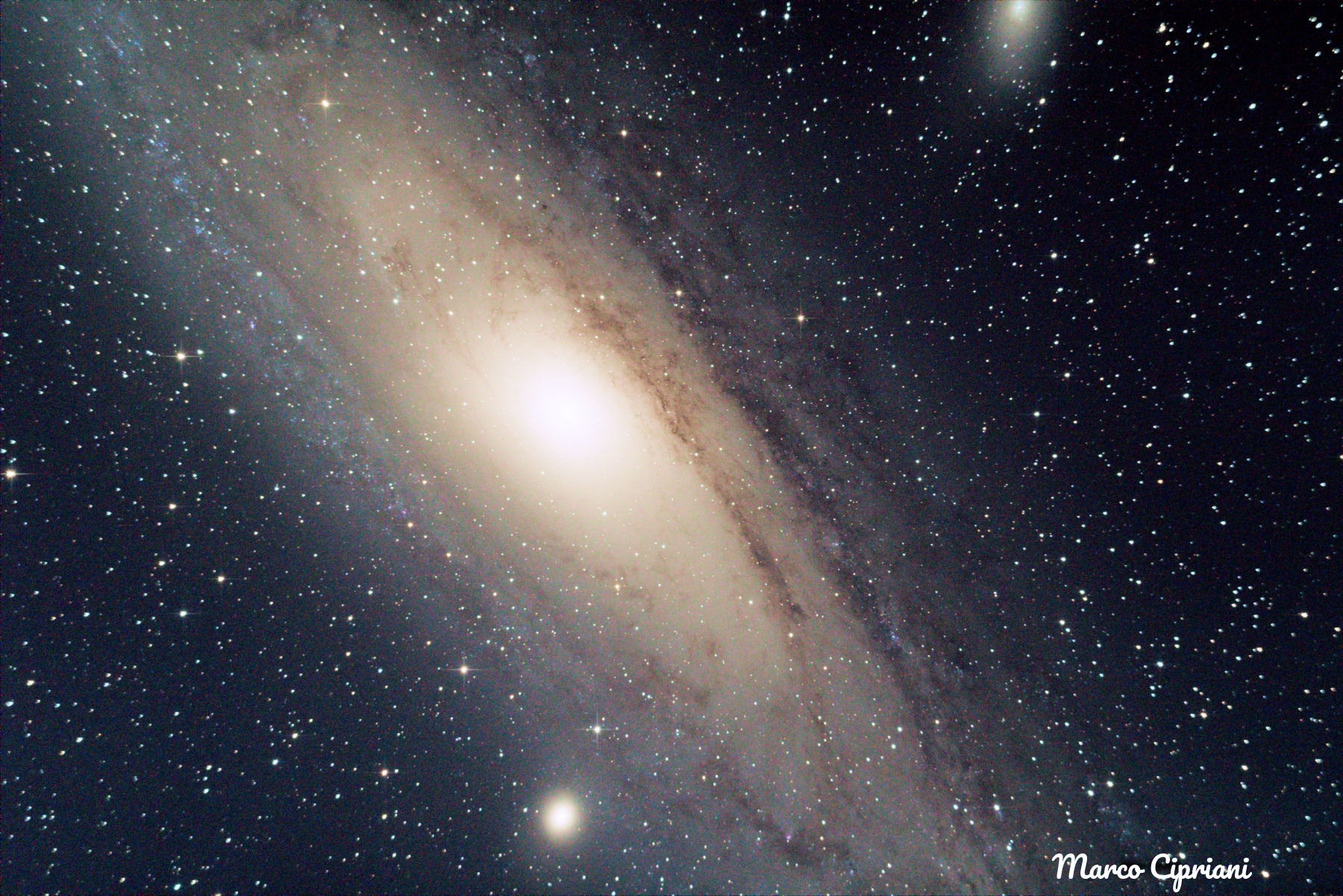
The Andromeda Galaxy, also known as M 31, is our closest galactic neighbour: a huge spiral galaxy, 2.54 million light-years away! It has more or less the same mass of the Milky Way, our home, but is bigger: it has a diameter of approximatively 220,000 light-years! It also has twice the number of stars our galaxy has. Unlike other galaxies, which are walking away from us, according to Hubble’s Law (therefore they’re redshifted), the Andromeda Galaxy is blueshifted: this means that someday, in 4.5 billion years, it will collide with our galaxy. It also has two satellite galaxies, M 32 and M 110, that are also visible in my photo.
M 31 was first thought to be a nebula, starting from the Persian astronomer Abd al-Rahman al-Sufi in 964 A.D. Later, in 1612, the astronomer Simon Marius described it thanks to some observations with his telescope. In 1745, the French mathematician Pierre Louis Maupertuis conjectured that the spot was an “island universe”. After 19 years Charles Messier categorized it in his Messier Catalog with the index number 31 and estimated its distance to 18,000 light-years. Our time machine must wait till 1850 to see the Anglo-Irish William Parsons draw Andromeda’s spiral structure and till 1864 to see the English astronomer Sir William Huggins understand that its spectrum is different from nebulae’s ones: there are no emission lines in it, just absorption lines!
Later in the years, in 1885 and 1917, supernovae were observed in the Andromeda Nebula, but since they looked 10 magnitudes fainter than those that occurred elsewhere in the sky, the American astronomer Heber Curtis was able to estimate the distance to 500,000 light-years: from that moment on, the “island universes” (galaxies) hypothesis started to be considered the best one.
We still have to wait until 1925 for Edwin Hubble, who discovered the first extragalactic Cepheid variable star in the Andromeda Galaxy: thanks to this kind of variable star, whose period is proportional to their brightness, he was finally able to say that the Andromeda Nebula is, in reality, a Galaxy, far away from any other object in the Milky Way.
My photo
I took 20 photos of the Andromeda Galaxy, from 4 AM to 4:20, right before dawn. Each sub is 60 seconds long, at ISO 1600, but thanks to the very low light pollution in Campo Catino they’re very sharp and with an excellent Signal-to-Noise Ratio (SNR). I processed these photos in Astro Pixel Processor and The GIMP, together with dark and flat frames.
The Dumbbell Nebula
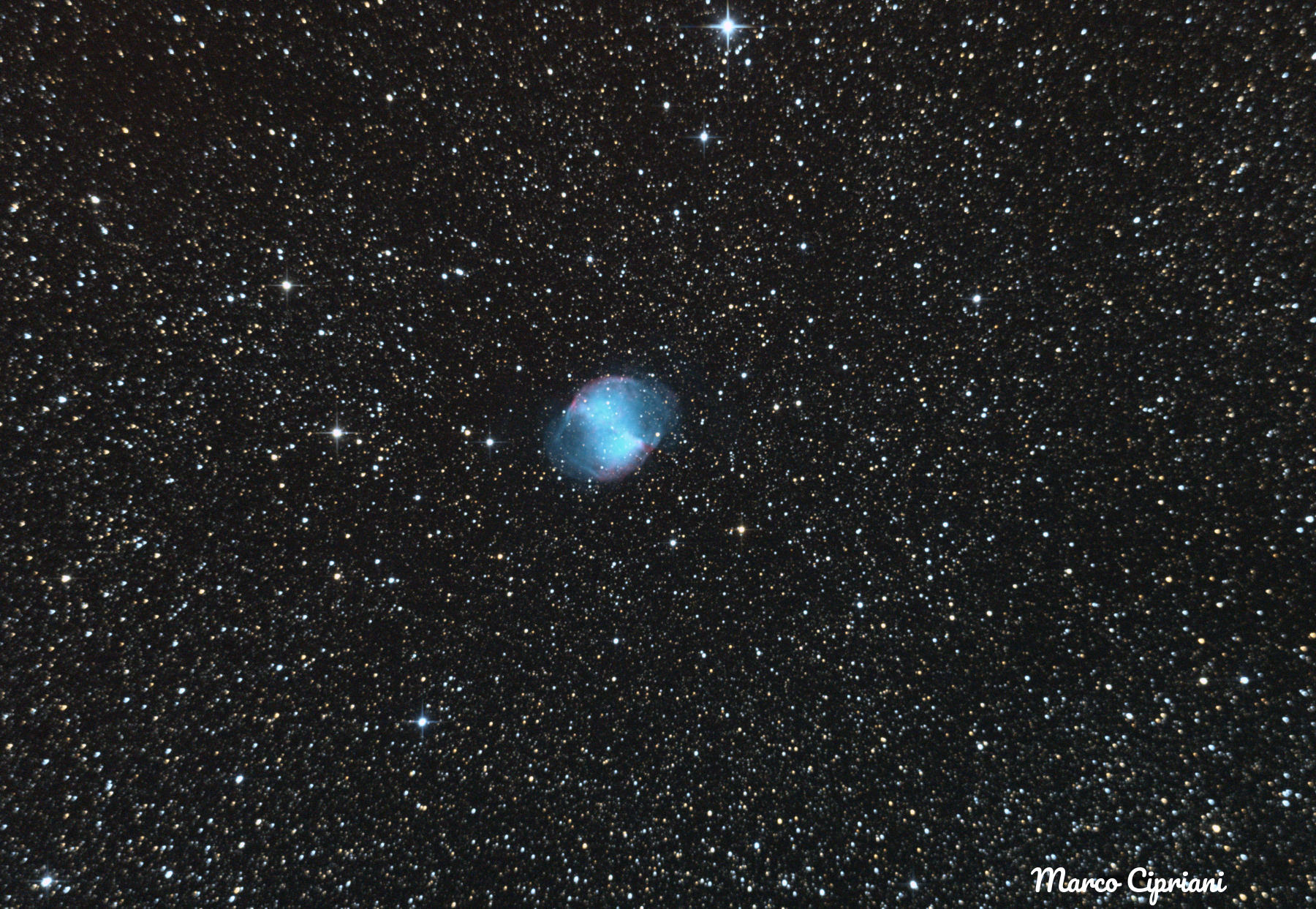
The dumbbell Nebula, also known as M 27 or NGC 6853, is a planetary nebula in the constellation Vulpecula. It is 1227 light-years away from Earth and its estimated age is 9,800 years.
This kind of nebulae is due to the expanding, glowing shell of ionized gas ejected from the surface of red giant stars during the very last stages of their life. Strong stellar winds are thought to be the cause of the expulsion of the gas. Meanwhile, the nucleus of the star starts emitting ultraviolet radiation, which ionizes the ejected layers and makes them produce visible light. Only stars whose masses from 0.8 solar masses to 8 solar masses are likely to become planetary nebulae since greater stars usually end their lives in dramatic supernovae explosions. Planetary nebulae are frequently spherical, but they can also create more complex structures.
The nucleus of the star will later collapse and create a white dwarf in the centre of the nebula. M 27’s central star radius is the largest known for a white dwarf! The term “planetary nebula” derives from the planet-like round shape these nebulae have and was coined by the first astronomers who discovered them.
My photo
To make every detail visible, I took various photos at different exposure times: 2x 120s ISO1600, 5x 120s ISO3200, 1x 150s ISO1600, 6x 180s ISO1600. The total exposure time is 35 minutes. Processing in Astro Pixel Processor and The GIMP.
The Triangulum Galaxy
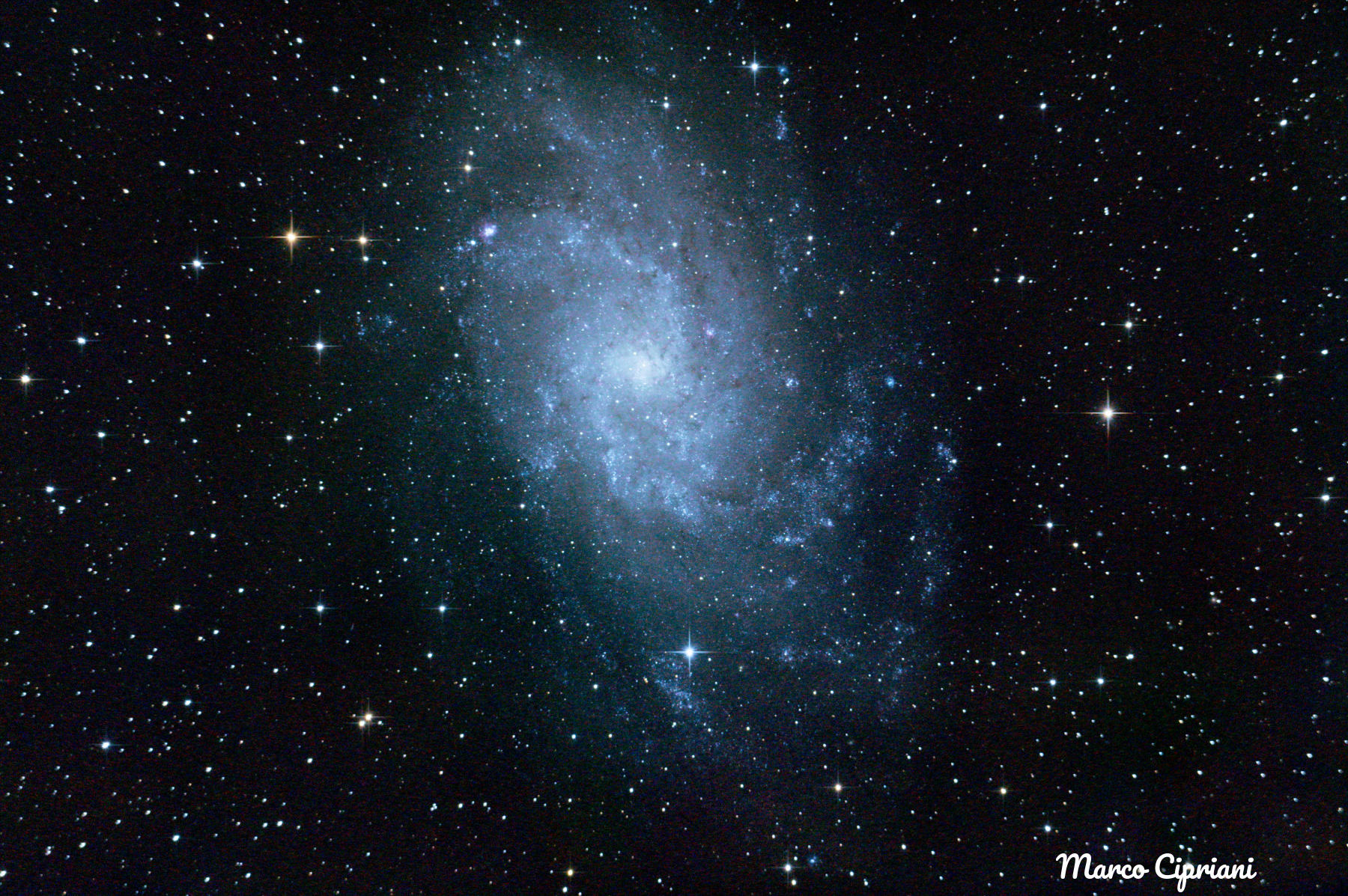
The Triangulum Galaxy is a spiral galaxy 2.73 million light-years from Earth. It can be found in the constellation Triangulum and is also known as Messier 33. It the third-largest member of the Local Group of galaxies, behind the Milky Way and the Andromeda Galaxy. It is one of the most distant objects that can be viewed with the naked eye, even if it can’t be seen in light-polluted areas like mine. Its galactic nucleus is mostly made of H-II nebulae, so it’s full of star-forming regions. The total diameter of the galaxy is about 60,000 light-years, about 60% the one of the Milky Way. Like Andromeda, it’s blueshifted, so it will probably collide with our galaxy someday.
It was first discovered by the Italian astronomer Giovanni Battista Hodierna near 1654, and later rediscovered in 1764 by Charles Messier, who added it to his catalogue.
My photo
I was able to capture 81 60-seconds-each subs at ISO 3200, for a total of 1.3 hours! The resulting stacked photo, processed with Astro Pixel Processor and The GIMP, looks gorgeous!
The Pinwheel Galaxy
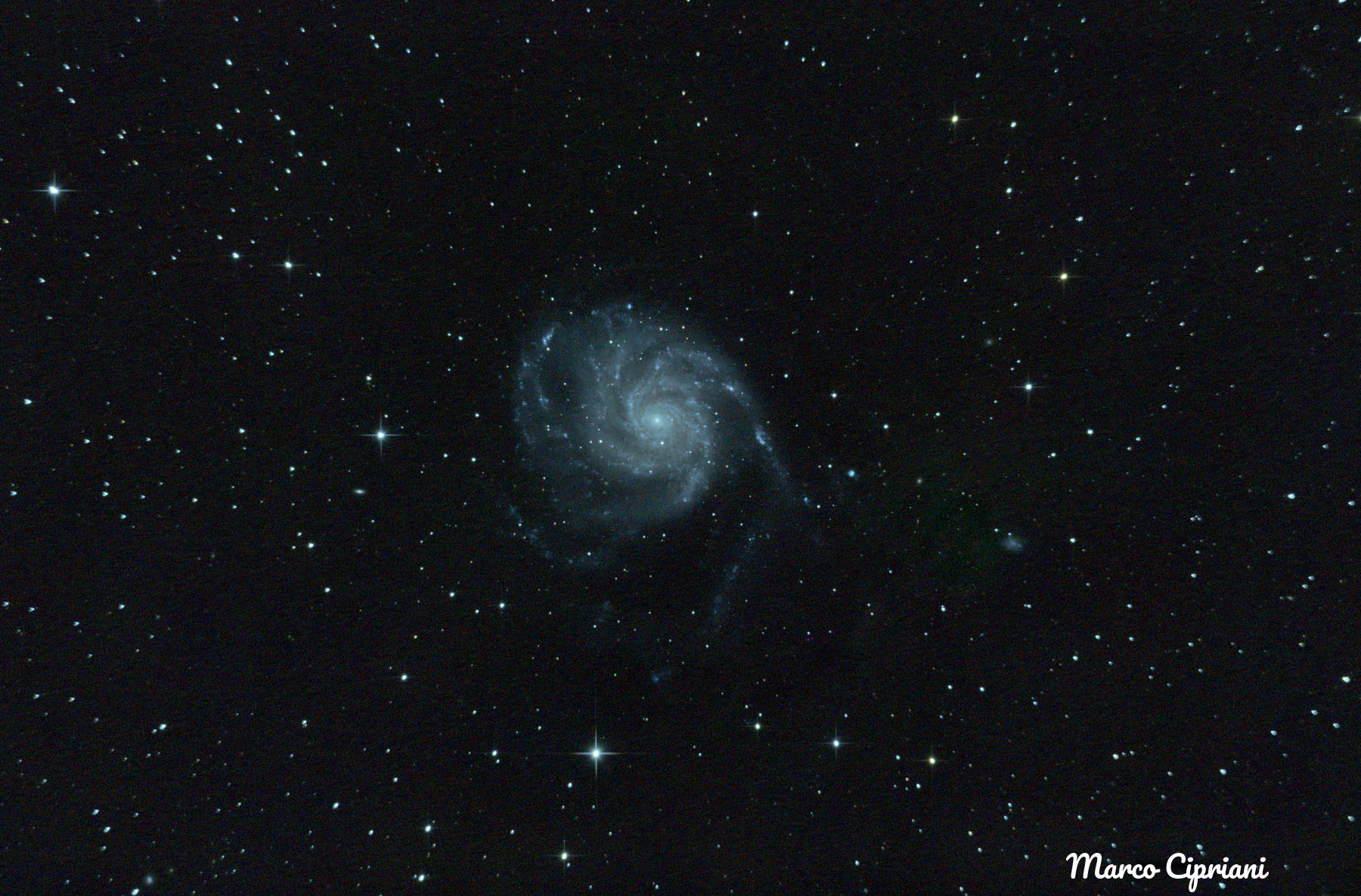
M 101, also known as the Pinwheel Galaxy, is a SAB(rs)cd spiral galaxy in the constellation Ursa Major. It is 21 million light-years away from Earth and faces towards us. It’s 170,000 light-years in diameter, so it’s smaller in size than the Milky Way, whose diameter is 258,000 ly. However, it has twice the number of stars of our galaxy! Moreover, a high population of Hydrogen II is present. It was discovered in 1791 by the French astronomer Pierre Méchain, who asked Charles Messier to add it to his Messier catalogue.
My photo
I took 23 180s-long photos at ISO 1600 for a total of 1.15 hours, plus dark, flat and bias frames. Processing in Astro Pixel Processor and The GIMP.
The Pacman Nebula
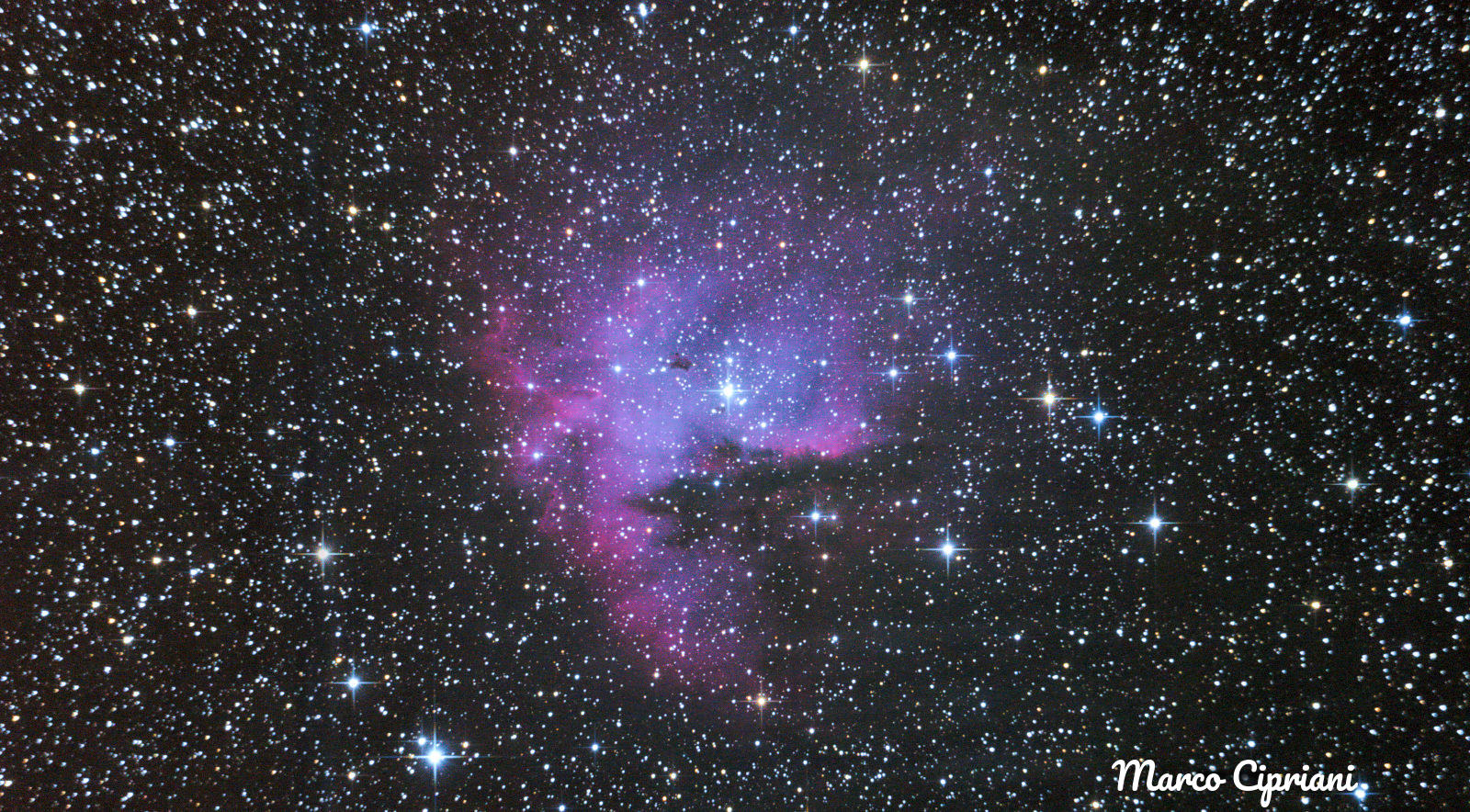
NGC 281, also known as the Pacman Nebula for his unusual shape, similar to the video game character, is a 48 light-years wide emission nebula in the circumpolar constellation Cassiopeia. It is associated with the open cluster IC 1590, which also emits light that helps the nebula glow. It’s mostly made of Hydrogen II and Oxigen III (ionized gas), belongs to the Perseus Spiral Arm (an arm of the Milky Way, ours is the Orion–Cygnus Arm) and is 9500 light-years from Earth. It was first discovered by the American astronomer Edward Emerson Barnard in 1883.
My photo
I took 41 photos, 120 seconds each (total 1.3 hours), at ISO 3200, plus dark, bias and flat frames. Stacking and processing in Astro Pixel Processor, Darktable and The GIMP. I got a good result considering the low exposure time and the high ISO.
